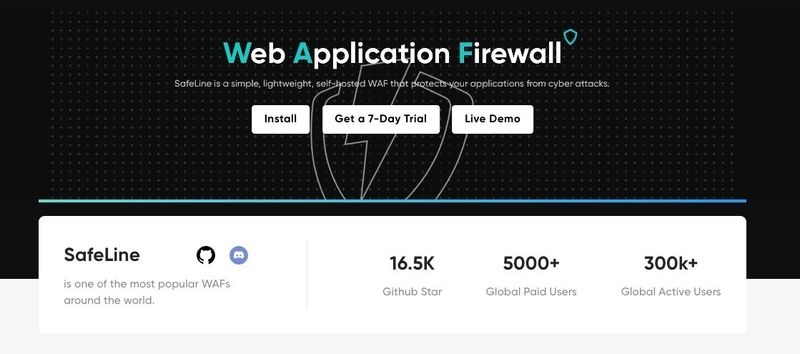Introduction
Web Application Firewalls (WAFs) are no longer just “extra protection” — for modern developers, they’re part of the deployment architecture. But the best WAF for you depends on your stack, scalability needs, and security priorities.
In this article, we compare SafeLine — a self-hosted WAF — with Bunny Shield — Bunny.net’s CDN-integrated WAF — through the lenses of deployment model, detection engine, DevOps integration, and pricing.
About the Solutions
SafeLine WAF
- Deployment: Reverse proxy
- Core Tech: Semantic analysis + AI logic
- Open Source: Community Edition on GitHub (17.3k+ stars)
- Best For: Developers, startups, and security-conscious teams wanting full control
Bunny Shield (Bunny.net WAF)
- Deployment: CDN-integrated edge security
- Core Tech: Rule-based + behavior heuristics + bot management
- Commercial: Part of Bunny.net paid plans
- Best For: Sites already using Bunny CDN or needing global edge protection
1. Deployment Model
SafeLine
- Runs as a reverse proxy in front of your application
- Works on bare metal, VMs, or Kubernetes
- Direct control over security logic and traffic routing
Bunny Shield
- Built into Bunny.net’s global CDN network
- Protects traffic before it even reaches your origin server
- No server setup, but requires routing DNS through Bunny.net
🆚 Takeaway: SafeLine = control & self-hosting flexibility. Bunny Shield = zero-maintenance global edge protection.
2. Detection Logic
SafeLine
- Uses semantic analysis to understand intent in HTTP payloads
- Extremely low false positive rate, even for complex APIs
- No traditional signature rules to maintain
Bunny Shield
- Relies on predefined WAF rules + anomaly detection
- Includes bot filtering, rate limiting, and IP blocking
- Easier to configure but less adaptive to novel threats
🆚 Takeaway: SafeLine is more adaptive; Bunny Shield is easier for quick deployment.
3. DevOps & Automation
SafeLine
- Full API control + YAML configs
- Open-source codebase for custom tuning
- Works in CI/CD pipelines for security-as-code
Bunny Shield
- Managed via Bunny.net dashboard & API
- Simplifies setup for non-security engineers
- No need to manage infrastructure
🆚 Takeaway: SafeLine fits teams with in-house DevSecOps workflows. Bunny Shield is better for minimal-ops environments.
4. Performance
SafeLine
- Adds ~1ms latency per request
- Performance depends on your hosting environment
Bunny Shield
- Runs entirely at the CDN edge
- Latency reduced due to caching & geo-distribution
🆚 Takeaway: Bunny Shield wins for global latency; SafeLine is still lightweight for self-hosted setups.
5. Pricing
SafeLine
- Free Community Edition + paid Pro version
- No traffic-based pricing
Bunny Shield
- Paid add-on to Bunny.net CDN plans
- Pricing based on bandwidth usage
🆚 Takeaway: SafeLine is budget-friendly for growing projects. Bunny Shield cost scales with traffic.
Conclusion
| Feature Area | SafeLine | Bunny Shield (Bunny.net) |
|---|---|---|
| Deployment Model | Reverse Proxy | CDN Edge WAF |
| Core Technology | Semantic AI Detection | Rule-Based + Heuristics |
| DevOps Integration | High (open source + API) | Moderate (managed) |
| Performance | Low Latency (self-hosted) | Global Edge Low Latency |
| Pricing | Free + Paid Pro | Paid (bandwidth-based) |
Choose SafeLine if…
- You want full control over WAF logic
- You like open-source tooling
- You’re running your own infrastructure
Choose Bunny Shield if…
- You’re already using Bunny.net CDN
- You want plug-and-play protection at the edge
- You don’t want to manage WAF servers




Top comments (1)
Nice comparison! 👏 Looks like SafeLine is great if you want full control and customization, while Bunny Shield wins for simplicity and global reach. Definitely depends on how hands-on your team wants to be.